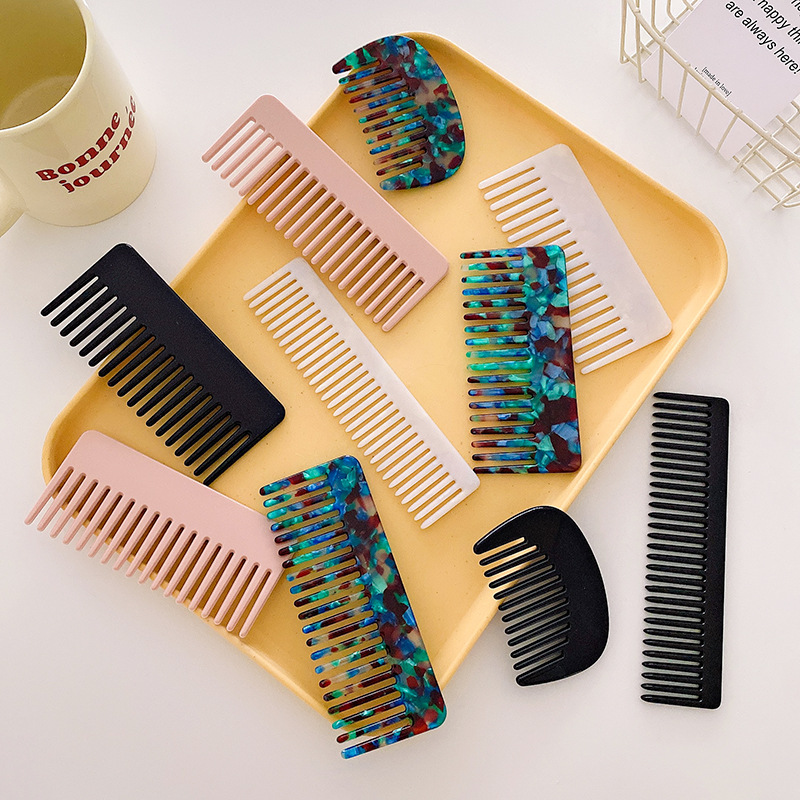If you have curly hair, you’ve probably experienced the frustration of combs that snag, break strands, or turn your curls into a frizzy mess. The secret to better detangling? **Wide-tooth combs**—and there’s actual science behind why they work so well.
1. Less Tension, Fewer Breakages
Curly hair is naturally more fragile due to its spiral structure, which creates uneven pressure points along each strand. Narrow combs force curls into a straight path, increasing tension and breakage. Wide-tooth combs, with their spaced-out teeth, **reduce pulling** by allowing curls to glide through without excessive force.
2. Preserves Natural Curl Pattern
Tightly spaced teeth disrupt curl clumps, leading to frizz. Wide gaps in a comb **follow the hair’s natural shape**, separating knots without unraveling the curl’s formation. This is why many stylists recommend finger-combing or wide-tooth tools for curly textures.
3. Better Moisture Distribution
Curly hair tends to be drier because natural oils struggle to travel down coiled strands. When you comb with a fine-tooth tool, you risk scraping away moisture. Wide-tooth combs **distribute conditioners and oils evenly** without stripping hydration.
4. The "Wet Hair" Factor
Hair is most vulnerable when wet (it stretches up to 30% more before breaking!). A dense comb on soaking-wet curls is a recipe for damage. Wide-tooth combs **detangle gently**, minimizing stress during washes—when curls need the most care.

What Makes a *Good* Wide-Tooth Comb?
Not all wide-tooth combs are equal. Look for:
- Smooth, rounded tips** (no sharp edges to cause micro-tears).
- Flexible material** (like sandalwood or acetate, which reduces static).
- Ergonomic handles** (for better control, especially on thick hair).
The Bottom Line
If you’ve been battling frizz or breakage, switching to a wide-tooth comb isn’t just a trend—it’s **biology and physics** working in your favor.
*Got a favorite comb that saved your curls? Share your go-to tools below!